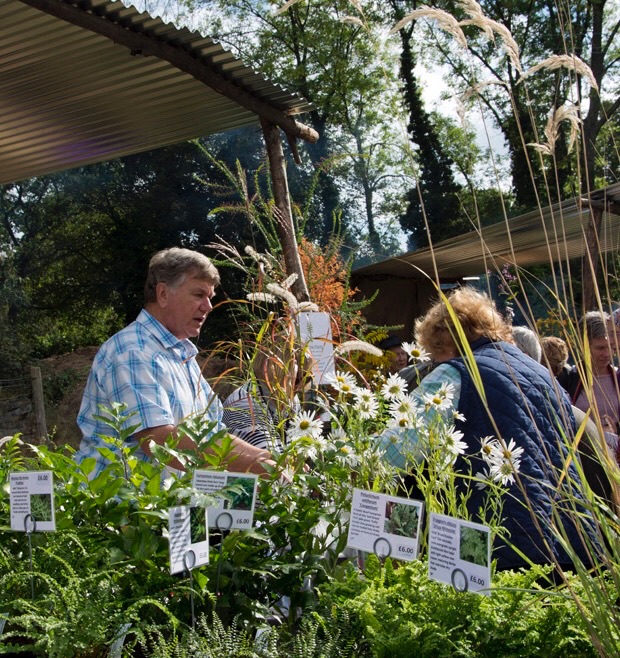This Week’s Guest Blogger is Ian Scroggy

Ian W. Scroggy HNDH
Ian Scroggy works with his parents running Bali-Hai Mail Order Nursery.
SLUGS NO MORE!!!!
I have been experimenting with different controls to prevent Slug and Snail damage to our Hosta stock on the nursery. I tried the usual beer traps or milk traps worked to a certain extent but only worked in a small area around the traps.
Hair clippings, egg shells, sharp grit, soot with little success if the slugs want to eat they will go over them.
Garlic extract now this is the one that gave the best results plus with added benefits.

The Garlic Recipe
You will need
2 Large Garlic bulbs Romanian Red is the best
Blender
2 pints of water
saucepan
Cloth to strain mixture
dark coloured bottle
Get two large Garlic bulbs place in a blender. Once finely crushed add contents to two pints of boiling water, let it boil for 2-3 minutes or until the garlic looks like it is blanched. Let it cool best to do this outside it does smell a bit. As soon as it is cooled get an old pair of stockings and place them over the saucepan and drain off the liquid into a dark plastic bottle the stockings help to filter out the small garlic pieces. Or pour into ice cube tray and freeze the concentrate. Now you have a concentrated liquid of garlic. With this liquid put two tablespoons into your watering can, or two ice cubes, about two gallon size or 10 litres and with a fine spray rose on your watering can water this over the leaves of your hostas best to do it in later afternoon after the strong midday sun has passed over. Spray your plants every 14 days during active growth i.e. from the first shoots starting to emerge to late August-September.
I have found this mixture can be bought ready made called “Garlic Barrier” if you search online you will find it. As it is totally organic it does no harm to the air or soil it actually improves the vigour of the Hostas and gives the leaves a good sheen which also helps build up good root systems as if the leaves are healthy they are able to produce more food to put back into their roots therefore producing more “eyes” so your plants will bulk up better. It also means you do not have to spray nasty chemicals so much only if you get a sudden outbreak of mildew or botrytis that you would need to spray with a fungicide. Yes I still use commercial grade slug pellets especially before the plants start to emerge as the garlic only works on the foliage, it leaves the leaves a nasty taste for the slugs they will bypass them for a hosta not treated with garlic. With slug pellets I only have to use 80% less than I did before I started using garlic so that is a marked improvement.
Try making your own garlic spray and just do one or two plants to start with so as you can see the difference with the Hostas that you sprayed and ones you left alone. Within a month you will see a good difference. I know the smell puts people off making their own but it is worth it I can assure you. Make sure when spraying the plants that the leaves are dry so as the spray will stay on the leaves and the liquid will dry on thus giving the protection. I only spray every 14 days but weekly would be even better. “Garlic Barrier” also do a granule form that you can mix in with the compost I tried this on 100 pots of Hostas but did not get the same results as I got from the liquid sprays but this was only a small scale trial it might work for you and there is hardly any smell of the granules
Bali-Hai Mail Order Nursery http://www.mailorderplants4me.com




 Sarah Owen-Hughes at Tromso Botanic Garden
Sarah Owen-Hughes at Tromso Botanic Garden Creating Secret Gardens at the Deershed Festival.
Creating Secret Gardens at the Deershed Festival. Installing a sedum roof at home
Installing a sedum roof at home
